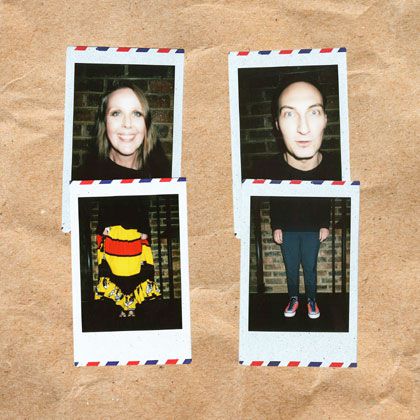
Havas South Africa's Fiona O'Connor and Carel Scheepers
Seventy-three percent of respondents believe brands must act now for the good of society and the planet. More than half (53%) of people are willing to pay more for a brand that stands for a purpose they can relate to.
According to Havas South Africa’s head of creative, Fiona O’Connor, and head of strategy, Carel Scheepers, to bridge the gap between consumers’ expectations and reality requires brand marketing executives to produce meaningful work that connects with people.
This was the key takeout of a dialogue dubbed #HavasConvos, between the two executives tasked with leading critical disciplines of a brand communications agency: brand creative and strategy.
Integration
Both O’Connor and Scheepers, who have 20- and 12-years’ experience, respectively, agree that it is counterproductive for creative and strategy to work in silos. “Because they are very different disciplines that also have similarities. You cannot really have one without the other,” says O’Connor.
Above and beyond that and to settle an age-old debate, O’Connor is of the opinion that the inclusion of strategy in the creative review process is not about judging the creative to ascertain if it is creative enough. For her, this is something the creative team already does internally.
“I think the main role for the strategist is to evaluate that the creative will connect with the audience and that the work stays true to the brief.
"This allows both parties to be able to defend the work on all fronts, especially when presenting a united front to clients,” says Scheepers.
A spot-on brief
For Havas, the two specialities are brought in at the beginning, when the brand brief first comes into the agency. Together with the business minds of the account management team, everyone brainstorms the brief to be able to devise an action plan that includes several milestone checkpoints.
This approach works for the agency because it enables everyone to contribute from their experience and expertise, thereby enriching the strategic and creative work.
O’Connor’s belief is that a spot-on brief is one that highlights specific and detailed insights and nuances of the brand strategy, thereby inspiring magic from the creative team. “I have two worst nightmares when it comes to working with creative briefs. That they are reverse-engineered strategic platforms and insights, as well as open-ended briefs,” she says, explaining that this is because of not knowing what the important parameters are with such briefs.
Creating meaningful work
What does meaningful work mean for you? “So, people think if the work is memorable then that automatically makes it meaningful,” Scheepers replies.
He says it needs to go beyond the memorable. “Meaningful work is honestly looking at simple stories around everyday life, which become the focal point of developing abstract and/or creative work,” says Scheepers.
O’Connor agrees. “It does not have to be this deep and meaningful insight. Because there are layers to creating meaningful work. And layers can be a single moment you relate to. It appeals to our sense of humour and our emotions which leads to the brand touching someone emphatically.”
Being meaningful is also listening and being aware. “It is the listening part that sees us playing the role of psychologists where we give someone a platform to tell me something and allow me to listen. And if you are brave enough to pick up the story, then you have made a meaningful difference,” says Scheepers.
The talent as our secret weapon
The two Havas leaders find that the advertising and brand communication industry is much more accessible now than it used to be. According to them, this is true not only for young and upcoming talent but also those wanting to make a career change.
They state that previously, one could not earn a qualification that is adjacent to strategic brand communication, copywriting, or graphic design and still establish a fulfilling career for themself in this industry.
Another evolution they have noticed is that once you have picked a career direction, you do not have to do only that until the day you die.
A perfect example of this journey cited by Scheepers is the Michelin-starred South African chef, Jan Hendrik van der Westhuizen. As a creative, Westhuizen has a keen interest in visual art that he nurtured by earning a Bachelor’s degree in Applied Design with a focus in photography. His diverse creative passions and skills have culminated in a life as an acclaimed chef, award winning author, and passionate photographer, for now.
“The soft skill that stands out to me the most is passion. You do need to have an eye for creative and like the skills, however this can be learned. But you cannot teach passion,” says O’Connor.
Scheepers appreciates eagerness in his team members. He says, “I am not disregarding talent. But eagerness, for me, is important because it is the difference between someone recognising their skill gaps and not doing anything to fill that gap.”
Both Scheepers and O’Connor have expressed their excitement in working even more closely together and seamlessly collaborating to create awesome work that is creatively strategic and meaningful.